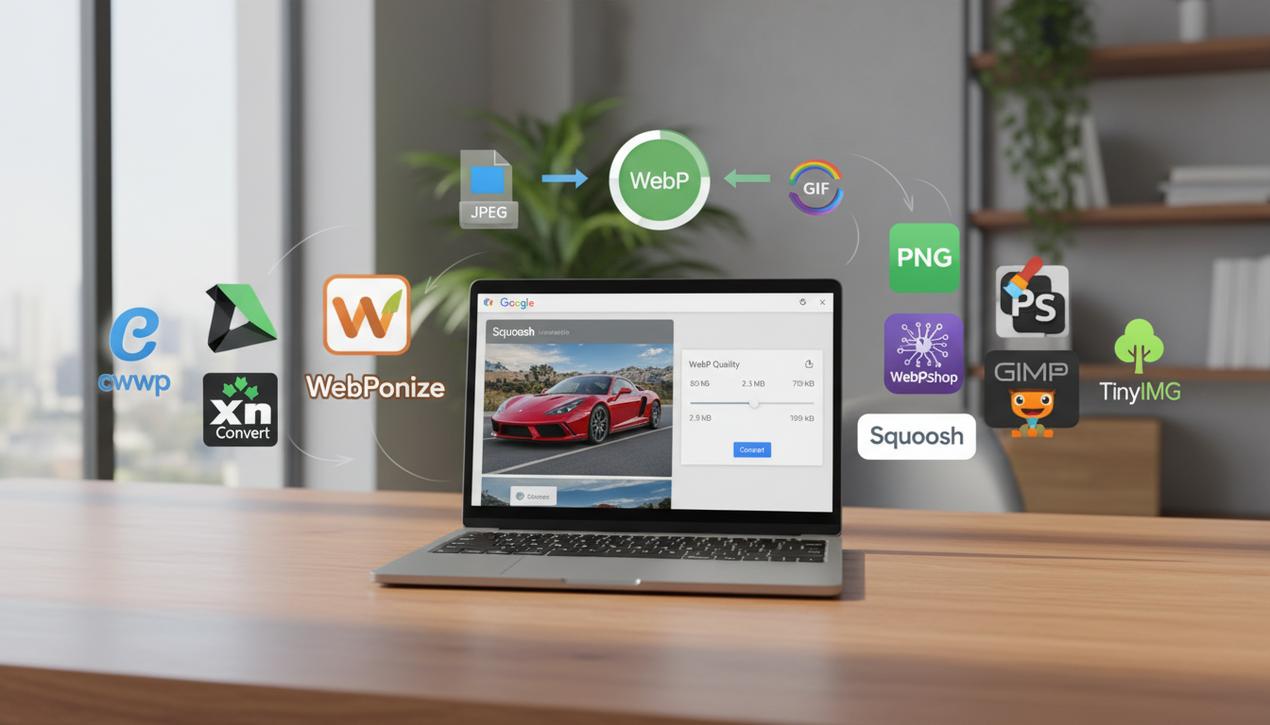Convert Word to HTML: A Guide to Perfectly Clean Code


In the content creation workflow, Microsoft Word remains a nearly universal starting point. However, the journey from that familiar text document to a high-performing webpage is fraught with pitfalls. A simple copy-paste into a CMS like WordPress, which powers over 43% of the entire web, can turn a well-structured article into a chaos of unnecessary code. This “dirty” code, filled with superfluous tags and inline styles, is poison for web performance in 2025. It slows down loading times, harms the user experience, and severely penalizes search engine optimization (SEO). Therefore, converting a Word file to HTML is not just a technical step; it’s a strategic necessity to ensure your content is readable, fast, and valued by search engines. This complete guide explains why and how to master this process and introduces you to the 8 best free tools to achieve it.
Why Clean HTML Is Non-Negotiable in 2025
The era when HTML was only for displaying text is long gone. Today, the cleanliness of your code directly impacts your site’s success. Ignoring this reality means risking your content getting lost in the depths of search results.
SEO First: Pleasing Google
Search engines, led by Google, are obsessed with performance. The Core Web Vitals have become a major ranking factor. HTML bloated with unnecessary Word tags directly slows down the Largest Contentful Paint (LCP), a key metric often impacted by the image compression techniques used. Clean, semantic code is also easier for Google’s bots to crawl, allowing them to better understand your page’s structure (headings, paragraphs, lists), which improves indexing.
Optimized User Experience (UX)
Clean HTML ensures consistent display across all browsers and devices, from large desktop screens to smartphones. It is the foundation of responsive design. Furthermore, semantically correct code is essential for accessibility. Screen readers used by visually impaired individuals rely on H1, H2, and p tags to navigate content. Polluted code makes this navigation difficult, if not impossible.
Simplified Maintenance and Future Compatibility
Working with clean HTML saves considerable time for developers and content managers. Updating an article, fixing a bug, or changing a CSS style becomes much simpler. Moreover, standard, lightweight code ensures better compatibility with future updates to your CMS and browsers, saving you from costly technical issues down the line.
Preparation: Optimizing Your Word Document Before Conversion
A successful conversion starts long before you use a tool. A well-prepared Word document can automate 80% of the work. Follow this checklist for optimal results:
- Use Built-in Styles: This is the most crucial step. Do not apply manual formatting. Use Word’s “Styles” gallery to structure everything. Apply “Heading 1” for your H1, “Heading 2” for your H2s, “Normal” for your paragraphs, etc.
- Clear Existing Formatting: If you’re working with an existing document, select all text (Ctrl+A) and click the “Clear All Formatting” icon to start with a clean slate before applying Styles.
- Manage Images Separately: Do not embed images directly in the document thinking they will be converted. Plan to upload them separately to your CMS’s media library and insert them into the final HTML.
- Insert Hyperlinks Correctly: Use Word’s hyperlink insertion tool (Ctrl+K). They will generally be preserved and converted into `` tags during the conversion, making it a good time to check for any broken links in your content.
- Use List Tools: Create your bulleted and numbered lists with Word’s dedicated functions. Do not use manual dashes or numbers.
- Avoid Exotic Colors and Fonts: Color and font management should be handled by your site’s CSS stylesheet, not in Word. These styles are often misinterpreted and bloat the code.
The Comparison: 8 Free Tools to Convert Word to HTML
Once your document is prepared, it’s time to choose the right tool. Here is a selection of the 8 best free solutions, each with its strengths and weaknesses.
1. WordHTML: Simplicity First
WordHTML is arguably the most straightforward tool. It features a dual interface: a visual editor on the left and the HTML output on the right. You paste your text, and the code appears instantly. Its main advantage is its integrated code cleaner, which allows you to remove empty tags, style attributes, classes, and superfluous IDs with a single click.
- Pros: Intuitive interface, powerful code cleaning, real-time preview.
- Cons: No .docx file upload; you must copy-paste the content.
- Best for: Users who want quick, visual control over the final code.
2. Convertio: The Versatile File Converter
Unlike WordHTML, Convertio is a pure file converter. You upload your .docx document (from your computer, Google Drive, or Dropbox), and it transforms it into an .html file that you can download. It doesn’t offer an editor or advanced cleaning options, but it is extremely efficient for batch conversions.
- Pros: Supports file uploads, cloud integration, handy Chrome extension.
- Cons: 100 MB size limit on the free version, no code cleaning features.
- Best for: Quickly converting documents stored in the cloud without worrying about the code.
3. Word to Clean HTML: The Cleaning Specialist
This tool, formerly known as Word2CleanHTML, focuses on one thing: producing the cleanest possible code. It offers a series of highly granular checkboxes to remove specific elements, convert `` tags to ``, replace special characters, and much more. Its interface is minimalist but incredibly effective.
- Pros: Highly detailed cleaning options, excellent for code purists.
- Cons: Slightly dated interface, no visual editor.
- Best for: Developers and content creators who demand full control over code cleanliness.
4. Zamzar: Conversion by Email
Zamzar is another online file converter that supports a multitude of formats. Its process is simple: upload, choose the output format (HTML), and start the conversion. A unique feature is the option to receive the converted file directly via email, which can be convenient for large documents.
- Pros: Unlimited conversions per day, email delivery, desktop app available.
- Cons: Conversion is not instantaneous, ads on the site.
- Best for: Users who convert many files and appreciate email notifications.
5. Google Docs: The Integrated Solution
Often overlooked, this option is very accessible. You can simply open a Word document in Google Docs, then go to “File” > “Download” > “Web Page (.html, zipped).” This method produces relatively clean code, especially if the document was well-structured using Google Docs’ heading styles.
- Pros: Free, accessible everywhere, no third-party tool needed.
- Cons: The code may still contain some superfluous classes and styles.
- Best for: Quick conversions and users already integrated into the Google ecosystem.
6. Online-Convert.com: The Conversion Factory
This site is a true Swiss Army knife of file conversion. Its “Document Converter” section handles the DOCX to HTML process perfectly. It offers interesting options like the ability to upload from a URL and basic settings for the output.
- Pros: Very versatile, numerous upload sources, fast conversion.
- Cons: The interface can be a bit cluttered due to the large number of options.
- Best for: Those with varied conversion needs beyond just the Word format.
7. TextCleanr: The Raw Text Cleaner
More than just a converter, TextCleanr is a text cleaning tool. You paste your text from Word, and it offers a multitude of functions to remove line breaks, multiple spaces, and most importantly, a “Clean HTML” function that does an excellent job of removing Word’s proprietary code.
- Pros: Very powerful text cleaning tools, simple interface.
- Cons: Less focused on converting structure (headings, lists) than others.
- Best for: Salvaging text from Word to use in a context where HTML formatting should be minimal.
8. Doxillion Document Converter: The Desktop Software
For those who prefer a software solution, Doxillion by NCH Software is a robust option. It allows for batch conversion of thousands of documents via a simple drag-and-drop. It is a powerful solution for businesses dealing with large volumes of content. The free version is limited but functional for occasional needs.
- Pros: High-performance batch conversion, works offline.
- Cons: Requires installation, the full version is paid ($19.99 for a business license).
- Best for: Businesses or professionals managing large volumes of documentation.
Mastering the conversion from Word to HTML is a fundamental skill for any web content creator in 2025. The process—which involves three stages: preparing the document, converting with a suitable tool, and a final code check—is the key to fast, accessible, and well-ranked web pages. By adopting these best practices, you are not just cleaning code; you are investing in your site’s performance and the quality of the experience you offer your visitors.




